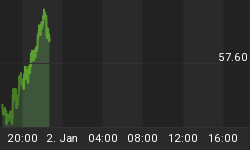Back in the 1980s, when Band Aid's first version of “Do They Know It's Christmas? (Feed The World)” was released, some 340 million people worldwide were at risk of starvation.
It’s worse today, and so is the waste.
This July’s UN report found that today there are 820 million people suffering from hunger, up from 811 million last year. For three consecutive years, the numbers have increased.
The raw truth is this: Hundreds of millions of people are facing hunger, while the world is wasting $1 trillion in food.
Earlier this week, the UN launched its awareness-raising #StopTheWaste campaign, bringing to the world’s attention just how bad the global food waste problem is.
The report came along with some shocking data, supporting by the UN’s Food and Agriculture Organization (FAO) annual State of Food and Agriculture report.
Roughly one-third of the food produced in the world for human consumption every year — approximately 1.3 billion tons — gets lost or wasted.
In money terms that everyone can understand, that’s about $1 trillion in food waste.
And it will come as no surprise that two-thirds of that waste originates in industrialized nations that aren’t starving.
From the moment crops are harvested to the point they hit supermarket shelves, 14 percent (or about $400 billion) of all food produced goes to waste. And that’s just the crops.
In the United States alone, consumers, businesses, and farms spend $218 billion on food that is never eaten.
Landfills get the lion’s share, taking in an estimated 52 million tons of wasted food.
Another 10 million tons are discarded or left unharvested on farms.
To lend this further perspective, sub-Saharan Africa produces around 230 million tons of food. Developed countries waste the same amount on a yearly basis. Of the food produced in sub-Saharan Africa, approximately a minor 6-11 kilograms is thrown away each year, per capital. That compares to 95-115 kilograms per capita of wasted food in Europe and North America.
And there are different reasons for food waste in each region, with wealthy developed nations wasting it because of poor consumer planning or poor retail planning (it rots on shelves). Poorer, developing nations lose food to climate change and poor infrastructure that fails to get it to market in time.
Related: Another Retail Giant Bites The Dust
International organizations have in the past created lofty goals of halving food waste, but it’s been an uphill battle.
In 2015, the UN drafted a resolution called “2030 Agenda for Sustainable Development”, which hoped to half global food waste by 2030 and reduce food production losses. Has it had any effect at all? No one really knows because we’re still operating on data that’s four years old.
The likelihood is that nothing will happen without private industries stepping up to the plate. Solving a problem this big takes money and efficiency.
Several major companies are also trying to improve efficiency in the food industry, but the first capital to do so was only raised in 2018 and it’s too early to see any impact.
Some next-generation start-ups are also jumping on the food waste bandwagon. Some of them enable consumers to buy unsold food from restaurants and grocery stores. Others seek to transform food that otherwise would have been wasted into new products.
Consumers themselves are still the biggest obstacle to all of this. For the wealthy countries, “waste-not, want-not” is a hard sell, and in a culture of mass consumerism, most are more concerned about how whether they’ll have enough room in their trash every week.
By Josh Owens for Safehaven.com

















